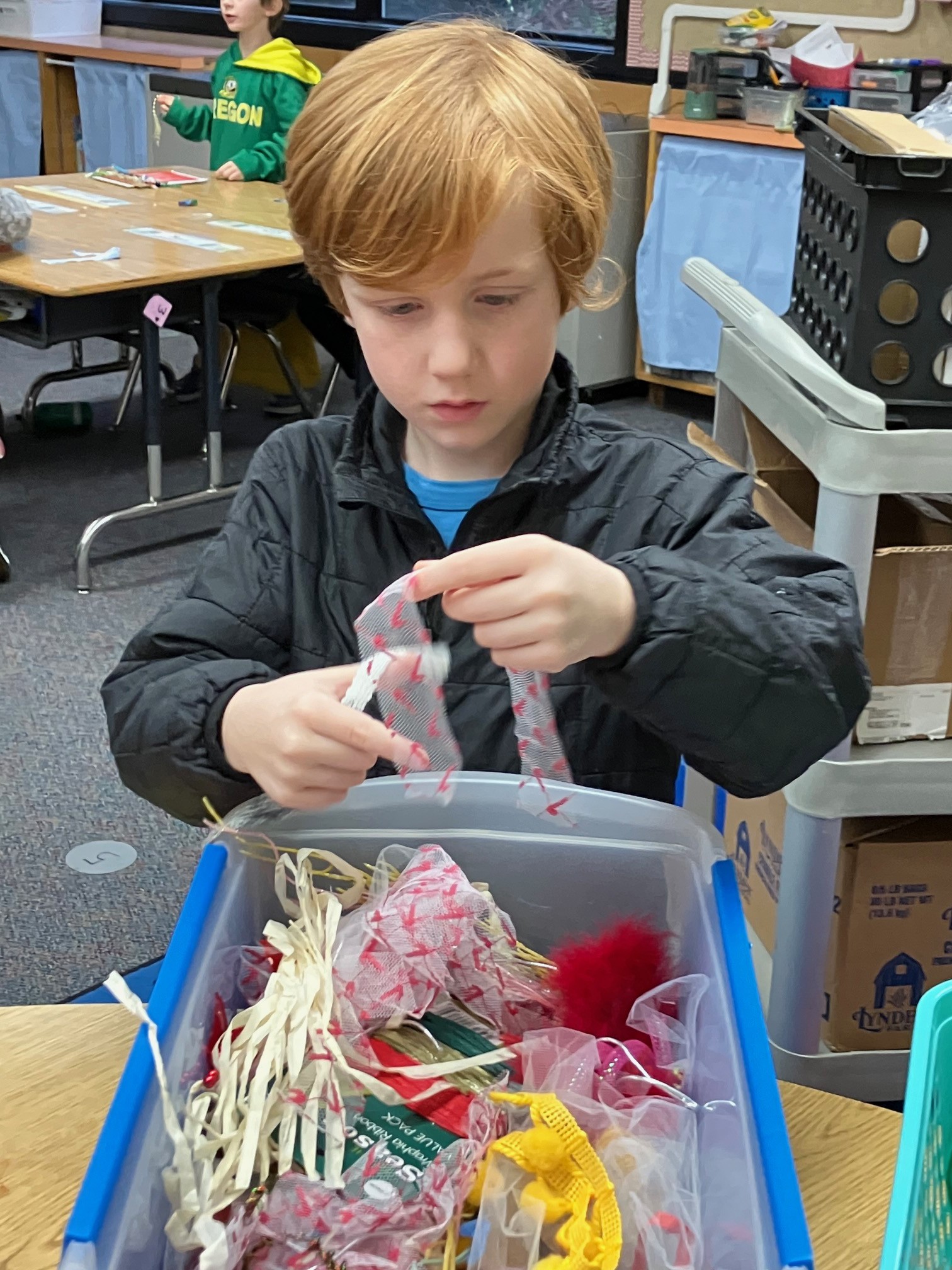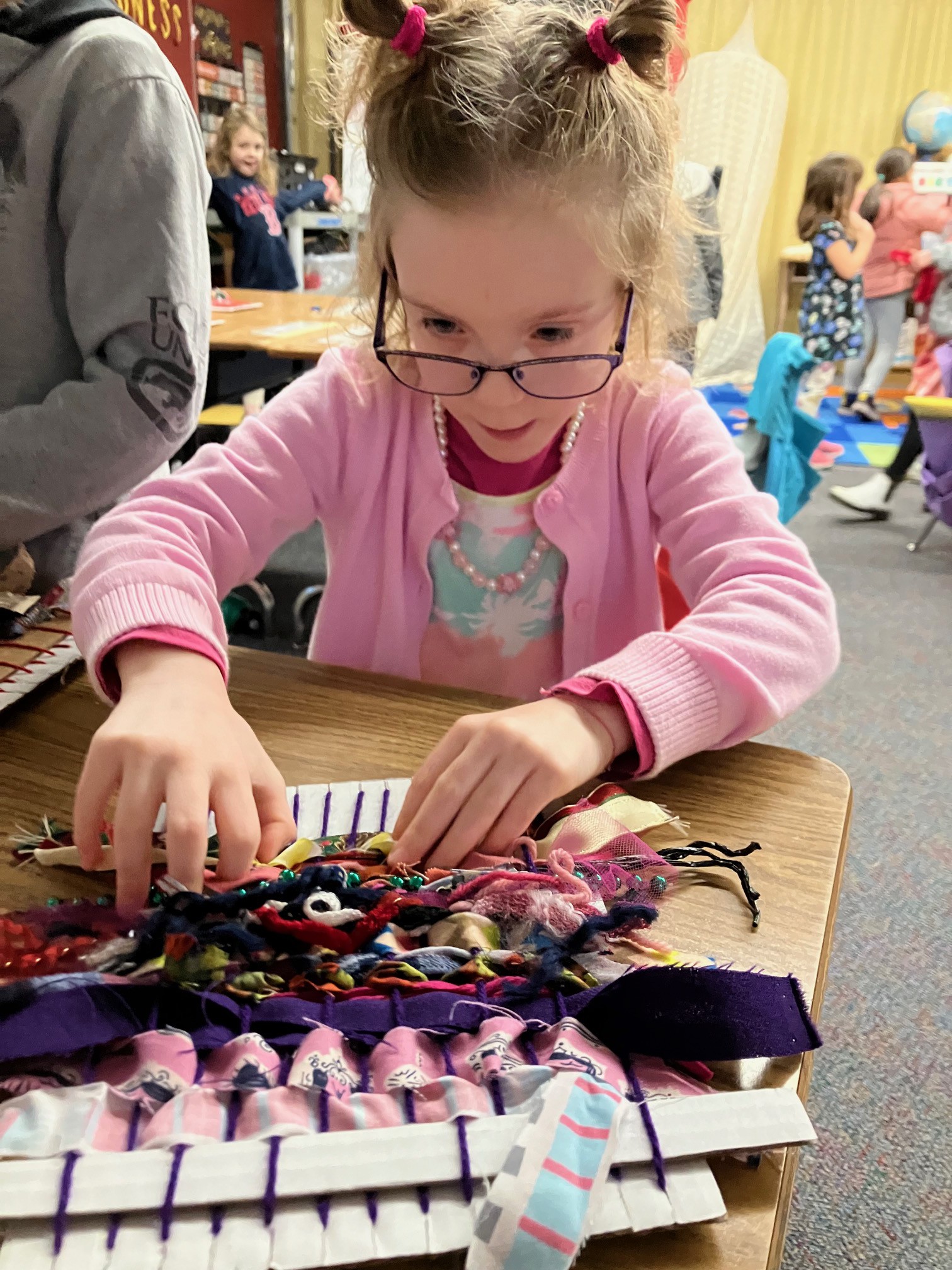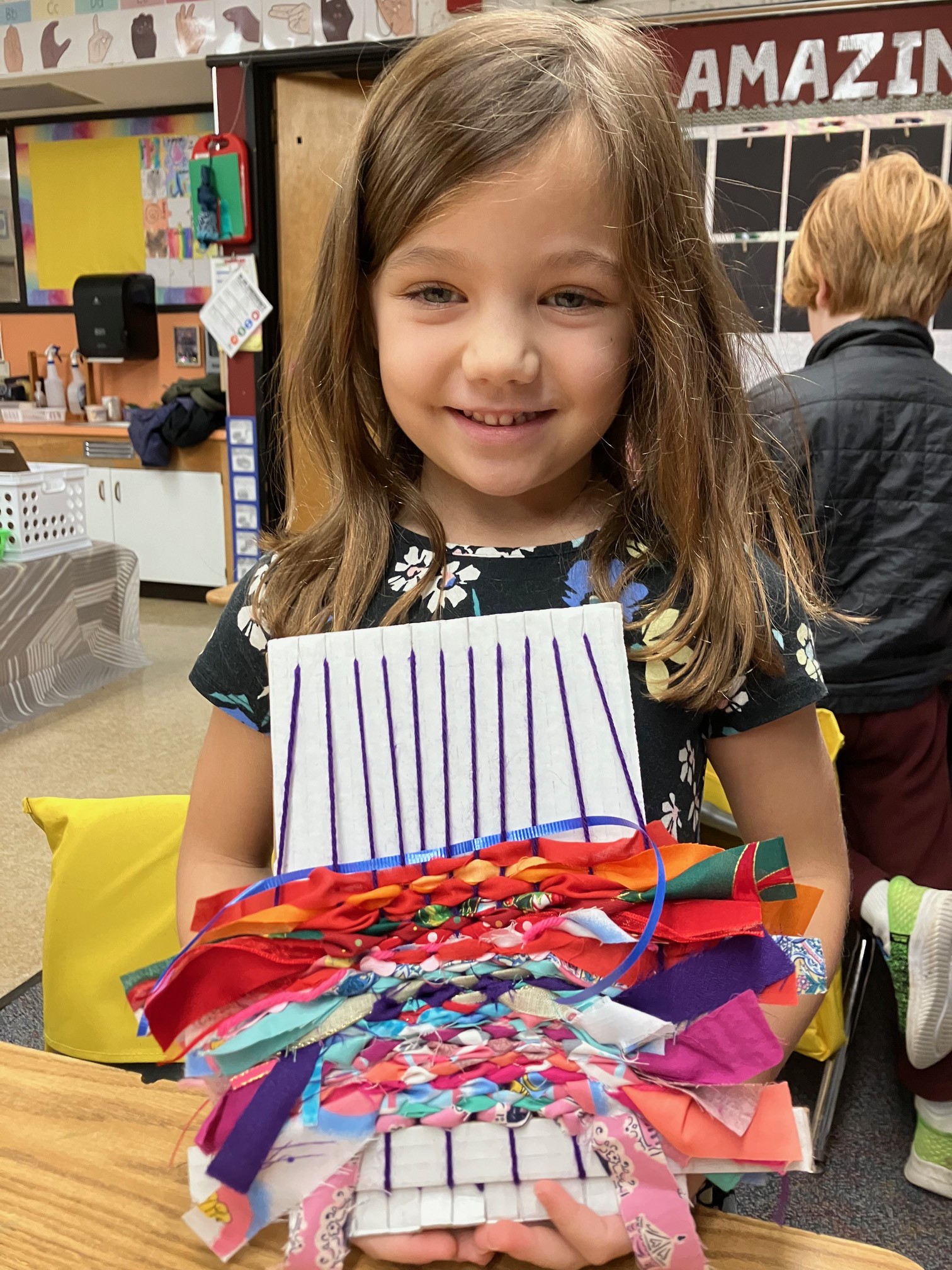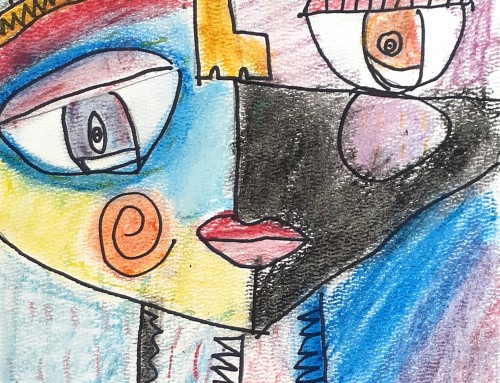Project Description
In this weaving workshop, participants will explore the process, broad history, and possibilities of weaving, and they will leave with a finished woven creation that they can use as a wall hanging, doily, or place mat. Tapestry weaving (also known as weft-faced weaving) engages students’ dexterity, fine motor skills, and spatial reasoning. It allows students to explore texture and color while working with yarn, ribbon, string, and found ephemera. Students learn that they can weave on their own with items commonly found around the house—no special materials needed. This tactile experience is widely accessible and perfect for engaging multiple modalities and a wide range of learning styles. It is also engaging, and many students from kindergarten through high school find it to be relaxing and lots of fun!
Final Product
A rectangular handmade piece of fabric that can be used as a doily or place mat or hung on the wall as a decorative tapestry. Kindergarten through 3rd grade will create a decorative spider web wall hanging created on a decorated paper plate.
Classes will also create a “group weaving” (with each student contributing) for the classroom teacher or school to display.
Learning Outcomes
- Students will be able to describe the process and materials of weaving using weaving terminology.
- Students will be able to demonstrate the basics of weaving, including dressing a tapestry loom (with the “warp”), doing basic tabby weave (including the “over, under” pattern and switching between rows), using weaving tools and knots, selecting materials and colors to create a design, and finishing the tapestry.
- Younger students will be able to decorate their cardboard loom, demonstrate basic tabby weave (including the “over, under” pattern and switching between rows), and select materials and colors to create a design.
- All students will demonstrate proper studio habits, including sharing materials, clean-up, and yarn storage.
Suggested Grades
- Appropriate for all grade levels.
Pricing Breakdown
- 4 visits at 45 minutes each
- Prep hours: 2 hours per classroom
- Materials: $1 per student
- Travel from Albany
Why I teach art:
“I love seeing students get into it! When students realize that they can create, when they really dig in and focus, when they persevere and problem-solve–and the pride on their faces when they have completed something that is unique to them–that makes art teaching so meaningful and special.”
—Jessi Earleywine Nelson










